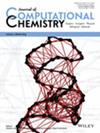Unraveling Reaction Path Bifurcation: Insights Into Electron Movement via Natural Reaction Orbitals
Abstract
This study investigates the Beckmann rearrangement of 1-phenyl-2-propanone oxime derivatives, focusing on the reaction path bifurcation behavior from the perspective of electron movement. The previous work reported that electron-withdrawing substituents drove the reaction toward the rearrangement pathway, while electron-donating substituents favored the fragmentation pathway. Through natural reaction orbital (NRO) analysis, this research demonstrates how electrons move at critical branching points, specifically in the directions of the intrinsic reaction coordinate (IRC) and the projected vibrational mode associated with the branching behavior. The NRO approach, which complements traditional IRC and ab initio molecular dynamics methods, not only provides valuable quantitative insights for predicting product distributions but also aids in the strategic design of substituents for desired products. These findings extend our understanding of reaction mechanisms and byproduct formation, offering fresh perspectives on complex chemical transformations.


 求助内容:
求助内容: 应助结果提醒方式:
应助结果提醒方式:


